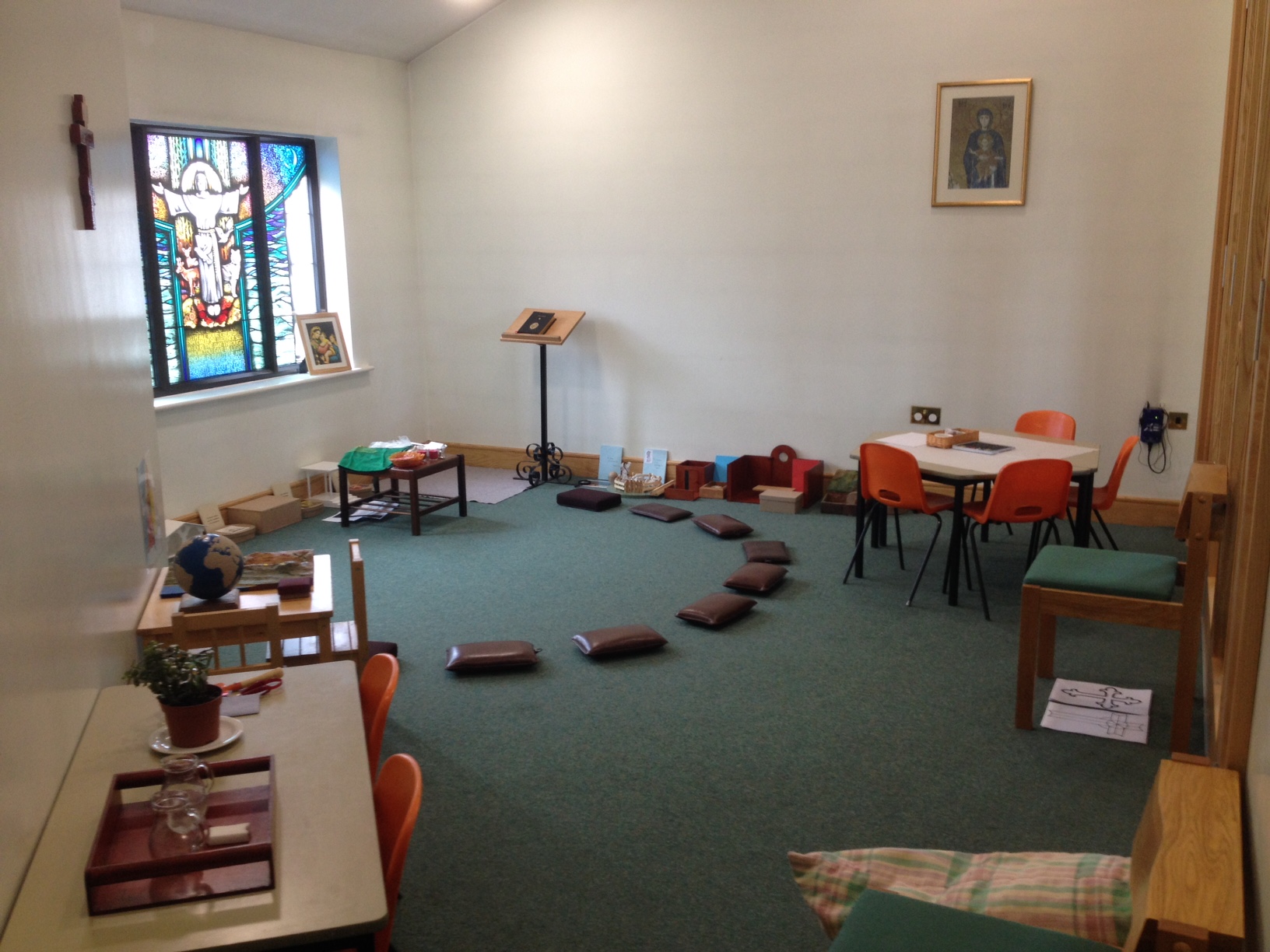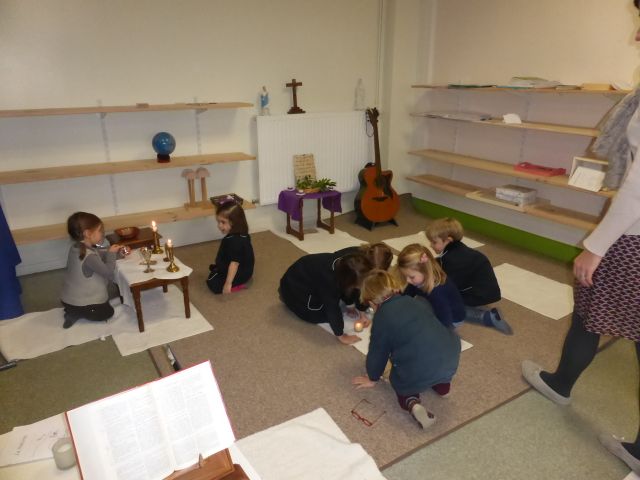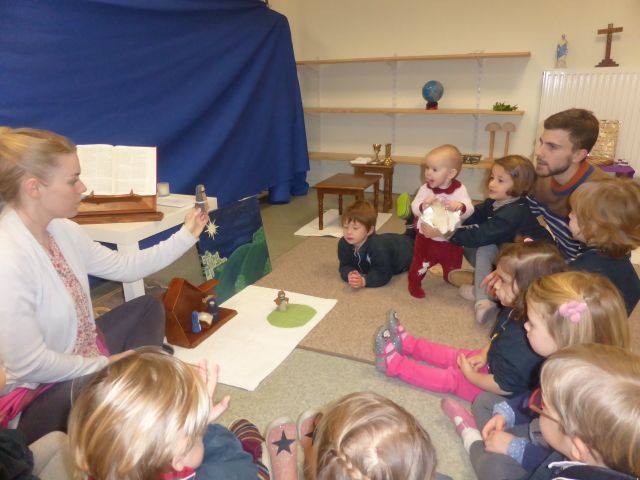Finding an atrium in the UK
If you are using the Catechesis of the Good Shepherd in your Church, we would love to get in touch
HOLY TRINITY CHURCH, BROOK GREEN, LONDON
Level I, II and III are running after school on different days of the week
Contact : gs.holytrinity at gmail.com
ST MATTHEW’S CATHOLIC CHURCH, LONDON
32 Hallowell Road
Northwood HA6 1DW
Level I
Contact : cgsnorthwood at gmail.com
CHRIST THE KING, COCKFOSTERS
29 BRAMLEY RD, LONDON N14 4HE
Levels I and II
Contact : cockfosters@rcdow.org.uk
CHURCH OF THE HOLY APOSTLES, LONDON
47 Cumberland St, Pimlico,London, SW1V 4LY
Level 1
Contact: Louise on 07901 584694
ATRIUM OF THE SACRED HEART, LONDON
CABRINI COMMUNITY CAMPUS, FOREST HILL RD, HONOR OAK PARK, SE23 3LF
Levels I and II
Contact: Christine Byrne at christinedeigratia@gmail.com
CHURCH OF THE SACRED HEART OF JESUS
ESSENDENE RD, CATERHAM, SURREY, CR3 5PA
Level I
Contact : cgs@sacred-heart.co.uk
ST JOSEPH’S CHURCH, GATESHEAD
High West St, Gateshead, Tyne and Wear, NE8 1LX
Contact: Missionaries of Charity 0191 273 0026
HIDDEN TREASURE ATRIUM, SURBITON, SURREY (private home)
Level I, II, III
Contact: Helen.music17@gmail.com
ABUNDANT LIFE ATRIUM, SURBITON, SURREY (private home)
Level I, II, III
Contact: christinedeigratia@gmail.com
HOLY CROSS DOMINICAN CHURCH, 45 WELLINGTON ST, LEICESTER, LE1 6HW
Level I
Contact: ellieemh@live.co.uk
OUR MOST HOLY REDEEMER & St. THOMAS MORE, LONDON
http://www.holyredeemerchelsea.co.uk/
Good Shepherd integrated in the weekly pre communion program
Contact: helenaletman@gmail.com
MUSTARD SEED ATRIUM, SCOTLAND
Greyfriars Convent (St Sylvester’s Parish)
15-19 Abbey Street, Elgin, Moray, IV30 1DA (Diocese of Aberdeen)
Levels I, II, and III (times upon request)
Contact Dominican Sisters: op@rcda.scot
IONA ATRIUM, SCOTLAND
The Gillis Centre, 100 Strathearn Road EH9 1BB (Archdiocese of St Andrews & Edinburgh)
Level 1: Fridays 1-2:30 pm
Contact Louise Aldridge: aldridgelouise@gmail.com
Level II: Tuesdays 4-5:30 pm Contact Ann Neil: annneil7777@gmail.com
BETHLEHEM ATRIUM, SCOTLAND
St. Theresa’s Catholic Church, East Calder, Main St, Livingston EH53 0ES (Archdiocese of St Andrews and Edinburgh)
Level I: Fridays at 1-230pm
Level II: Mondays 4-530pm
Contact Fr Kevin Douglas: frkevin.douglas@staned.org.uk
ST ENOCH’S ATRIUM, SCOTLAND
Glasgow University Catholic Chaplaincy 13-15 Southpark Terrace, Glasgow, G12 8LG (Archdiocese of Glasgow)
Level I: Sundays after 9 am Mass
Level II: Sundays after 11 am Mass Contact Sr Catherine Farrelly: srcatherine@cwpli.co.uk
ST THERESE OF LISIEUX ATRIUM, SCOTLAND
St. Columbkille’s Church
2 Kirkwood Street Rutherglen, Glasgow G73 2SL (Diocese of Motherwell)
Level I: Sundays 11:30am in Parish Hall
Contact Deacon Michael Ross: michaelkilloranross@icloud.com
THE SHEEPFOLD ATRIUM, SCOTLAND
The Catholic Parish of the Most Holy Trinity (St John & St Columba’s) Rosyth, Fife 137 Admiralty Rd, Rosyth, Dunfermline KY11 2QL (Archdiocese of St Andrews & Edinburgh)
Level I: Friday 11am - 1pm
Level II: Thursday 3.30 - 5pm Contact Ann Neil: annneil7777@gmail.com
ST GIANNA BERETTA MOLLA ATRIUM, SCOTLAND
St James the Greater Parish, 232 Woodhall Ave, Coatbridge ML5 5DF (Diocese of Motherwell)
Level I: Sundays immediately after 10.30am Mass
Contact Gayle Campbell: gayleacampbell@gmail.com
A sacred space
Catechesis of the Good Shepherd places a special priority on the space in which religious formation takes place. Maria Montessori observed that young children have “absorbent minds,” meaning that they learn language, culture and even religious belief largely through the process of osmosis or “absorbing” what is around them rather than through lessons and lectures. If children’s experience of the Spirit or “Inner Teacher” drives them toward what they need to grow, the environment around the children can be understood as the “Outer Teacher”; it can help them meet those needs or it can stifle them. Unlike traditional religious education, the Catechesis of the Good Shepherd emphasizes the "atrium" environment in which formation takes place. It is purposely structured not as a classroom, but a place in which the spiritual life can be lived.
In early church architecture, an atrium was a gathering place between the liturgical space of the church and the street. It was a space where the faithful recollected themselves before entering into worship and where catechumens received instruction in the faith as part of their initiation into the Christian community. Maria Montessori understood the atrium to serve a similar purpose; it was not to be a children’s church separate from the adult church, but rather an aid to the fuller participation of children in the liturgical and communal life of the one church that includes baptized Christians of all ages.







